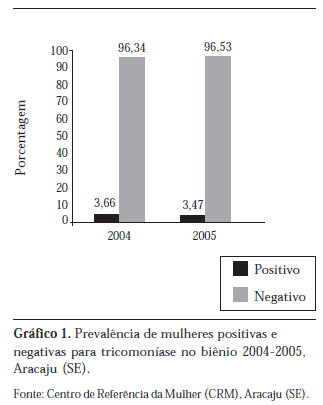Trichomoniasis is a disease caused by the protozoan Trichomonas vaginalis, which initiates a wide variety of clinical manifestations. It may be associated with human immunodeficiency virus, cervical cancer, infertility and other diseases. Its incidence ranges from 20% up to 40% in Brazil. The primary channel of transmission is by sexual contact and laboratorial diagnostic may be performed by chain polymerase reaction (CPR), culture medium isolation, fresh vaginal content exam and/or colored by Giemsa and Papanicolau methods. The later has limitations in the detection of pathologies considered sexually transmissible, like Thricomoniasis. This work deals with prevalence of Thricomoniasis in users of laboratories associated with the Ministry of Health, in the age group from 19 up to 44 years old which were submitted to Papanicolau test in 2004-2005 in Sergipe state, Brazil. Results have revealed that among 206,034 users, 7,349 have shown Thricomoniasis, being 3,788 in 2004 and 3,498 in 2005. It could be observed that the estimated prevalence in Sergipe in the biennium studied did not corroborate with the Brazilian reality, which may be attributed to the diagnostic executed.
Thricomoniasis; Prevalence; Women; Sergipe



